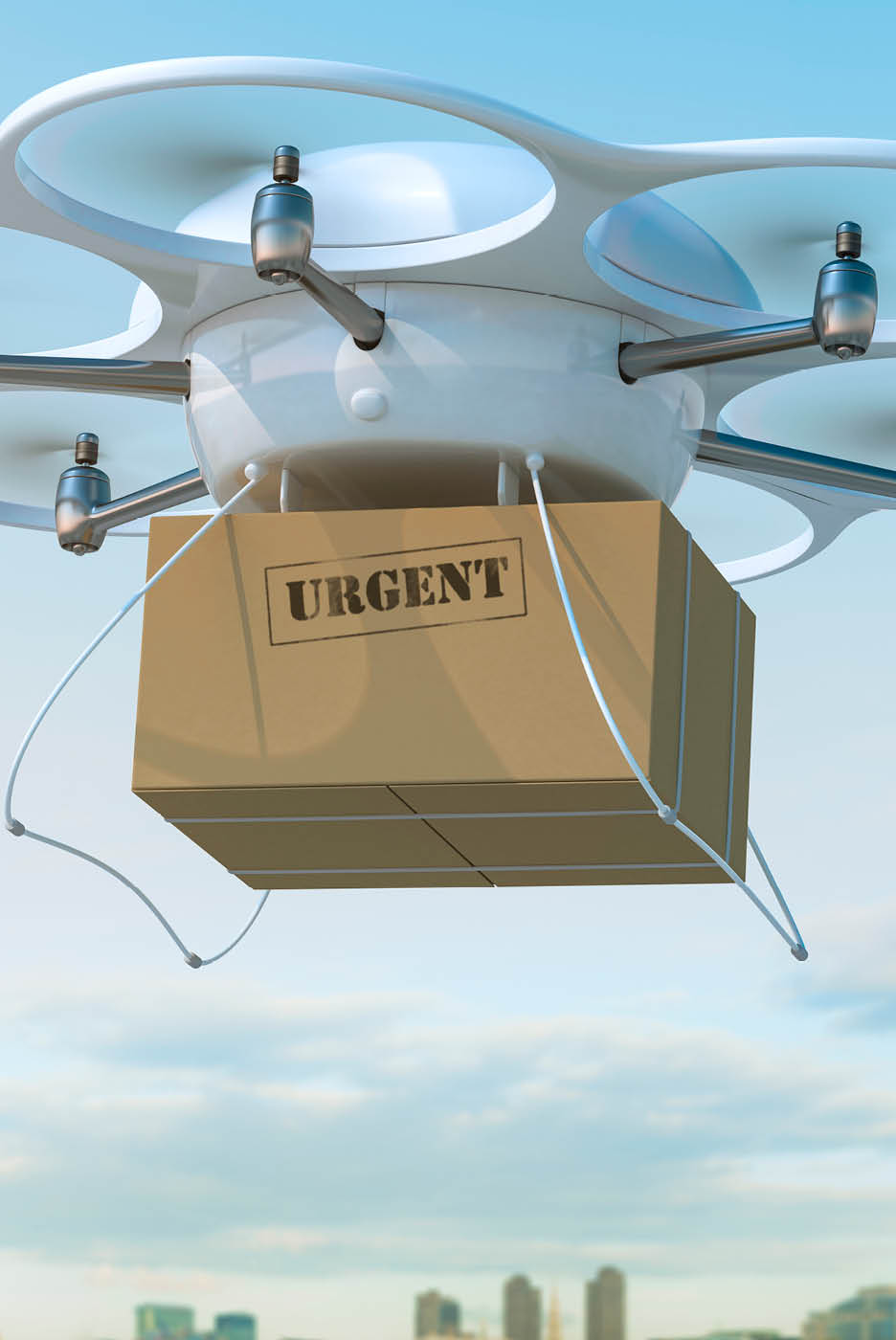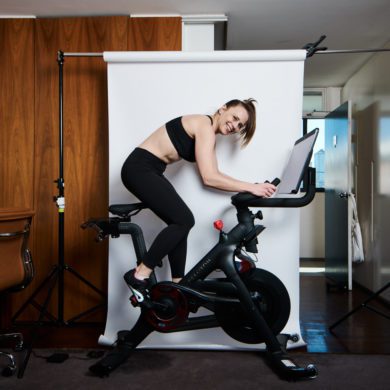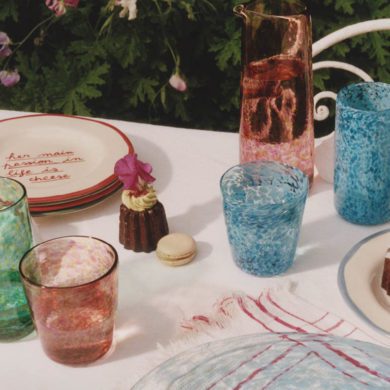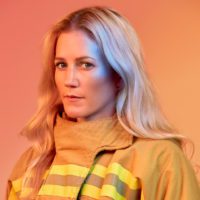Fashion-tech is having a moment, partly because of the pandemic forcing us all to shop online and partly because it’s about time.
Obviously, Covid-19 has changed the way we shop; in fact, online shopping rose by 32 per cent last financial year, with 9.1 million households buying something online – the most ever recorded. But fashion has been slow to respond, with a 2-D shopping experience that seems to cling to the idea that most of us would still prefer to shop in-store, or else put up with the inconvenience of trying items at home and returning what we don’t love.
Not anymore. The past year has seen a huge rise in apps and platforms promising to revolutionise online shopping (and venture capital firms eager to buy them out). From apps that digitise your wardrobe, to platforms that enable you to chat to sales assistants in-store, brands are using tech innovations to deliver a more personalised experience.
New fashion technology, apps and platforms will change the way we shop
“The collection and analysis of consumer data, and the growth of AI, lets brands make much more targeted offers to consumers, and integrate their products with their customers’ lives in a meaningful way,” says Stephen Wigley, Associate Dean at Fashion Enterprise at RMIT.
So, how will you be shopping in the next few years?
You’ll be digitising your wardrobe
Whering launched last June with the promise of helping us fall in love again with the clothes we already own. It’s a simple, yet genius idea: You take photos of your clothes, which the Whering team then crops and tags, and from there you can pull together outfits and schedule them for the week (if you’re super organised – we possibly are not). It’s like an outfit planner on your phone. You can access styling advice and the app also suggests new items that will complement what’s already in your wardrobe.
“Our mission is to extend the lifecycle of clothes by taking our wardrobes digital and getting us to fall back in love with what we already have,” Whering’s founder, Bianca Rangecroft, told Harper’s Bazaar.
You’ll use everyday influencers to guide your style
Mys Tyler enables you to find everyday people who share your body type and fashion sense, so you can shop their style (literally – you can buy the clothes they’re wearing). This app is great for those of us (ie most of us) who aren’t the perfect size 8, as you can find someone who looks like you and has similar taste, and see how the pieces you kinda want to buy will look on an actual body.
Sydney-based founder Sarah Neill believes Mys Tyler reduces the amount of fashion waste.
“Technology can personalise a consumer’s shopping experience helping people find the items that will work for them – reducing returns, (excess shipping, packaging and handling), and improve the efficiency of all of our wardrobes,” she says.
You’ll have an Avatar to try on clothes for you
If you’ve seen the ’90s classic Clueless, you will remember the scene where Cher is using an avatar of herself to choose what fabulous outfit to wear to school from her wardrobe. (She clearly didn’t attend an Australian public school; my choices growing up were a scratchy polo or a scratchy polo.)
The avatar of herself showed her what each outfit looked like on, without her actually having to physically try it on! No clothes were left in a pile on her bedroom floor.
Flash-forward to now and the website plug-in Style.Me allows users to create an avatar of themselves based on their body measurements and their body shape. The 3D technology then maps garment patterns and sizes to the user’s specific measurements, allowing them to try on clothes while they browse online.
Style.Me isn’t yet widely available yet but we predict it’ll be everywhere soon.
Or you’ll be using magic mirrors
Soon, we’ll be able to see what something looks like on us digitally, without having to try it on first. Sephora is already using this tech with Virtual Artist, an app that allows users to see makeup looks on themselves without having to buy.
Meanwhile, MemoMi is a digital mirror that – if you do venture in-store – scans your body and then enables you to see what pieces look like on your body without the need to try them on (it’s basically a magic mirror).
You’ll be buying with an eye to resale
Fashion plug-in Airrobe integrates into your favourite online store so you can see the estimated resale value of a piece before you buy it. At checkout, Airrobe stores all the product information – including sizing, images, fabric etc – in a virtual wardrobe. Then, if you do want to sell it down the track, you can simply list it on Airrobe with one click.
Be warned: There are some beautiful pieces on here.
AirRobe founder Hannon Comazzetto explained the app was born because of, “the huge gap in the market for solutions that simultaneously help fashion brands to be part of the solution to the waste problem but in a way that takes care of the bottom line. The innovative app allows you to join the circular economy by reselling your clothes.”
You’ll be video-calling assistants in-store
No longer will shopping online mean you are stuck talking to a bot about what size shoe to buy. Instead, you’ll be able to video call a retail assistant to ask a question or see a product before purchasing, thanks to a tech company called Hero.
In Hero’s world, retail staff are both real-time sales assistants and content creators; they’re also charged with making videos of specific content for customers.
“My view is very simple: follow where the customer is,” Hero’s CEO Adam Levene told Shopify. And the customer today is increasingly starting their journey online. And it’s been criminal for too long that brands don’t provide the same level of assistance or service they do in physical retail as they should be doing online.”
Not that you’ll have to talk to an assistant in-store…
Voice Commerce will become a huge part of in-store shopping experiences. As with Google Assist, Siri and Alexa, you’ll be able to ask your phone where products are, and trigger products being delivered to you without approaching a shop assistant. You can now use Alexa to shop for groceries on Amazon Fresh and Walmart has teamed up with Google for Walmart Voice Over, which means you can shop just with your voice.
You’ll be receiving your order via drone
While same-day shipping may still seem like a novelty, the future should offer consumers their goods within minutes using drones. This may sound incredibly futuristic, as you refresh your Australia Post app to check your tracking, but it is actually already happening in Australia, just not on a mass scale.
Drone Company Wings delivers, food, fashion and essentials to selected suburbs in the ACT and Queensland, and in 2020 teamed up with fashion brand LSKD to deliver its summer collection to customers within minutes.
However, there’s endless room for growth. “Consumers desire convenience and speed,” a Wings spokesperson told me. “On-demand drone delivery can help address the last-mile delivery challenge, reduce road congestion and emissions.”














No Comments